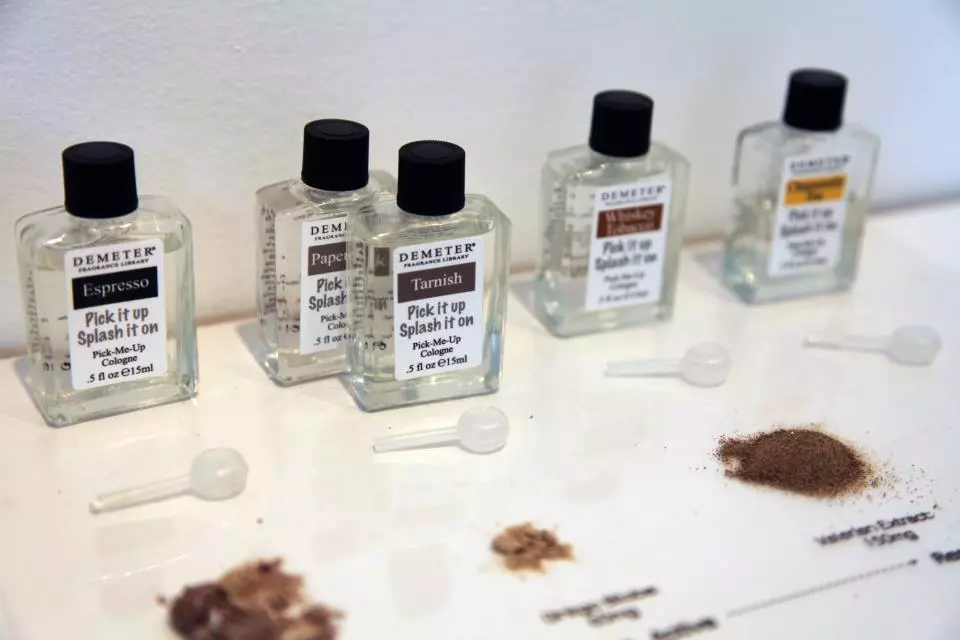Glancing at a clock face in one form or another has been the de facto way to measure the passage of time. Aisen Caro Chacin though, is exploring a different perspective. She wants to give everyone the ability to tell time using their noses. Her chemical-based watch called the Scent Rhythm emits specially-designed fragrances in minute doses, in tune with circadian cycle of the human body. You get a fragrance of coffee in the morning, the smell of money in the afternoon, a relaxing whiskey scent in the evening, and a soothing chamomile fragrance at night. More than being merely pleasant, each chemically-supplemented scent aims to induce action appropriate to the time of day; the caffeine in the coffee scent for example, aims to trigger the person into being more active.
"I have found that detonating scent is a great way to understand time in a passive way," Chacin, a Physical Computing Lecturer at The New School, New York, tells Gizmag. "I designed the watch with integrating time perception with a gradual change – a reminder that has a chemical component such as scent."
The Scent Rhythm watch packs four glass bulbs into its large frame. Each bulb is filled with around a milliliter of one of the four liquid scents. Piezoelectric atomizers convert the liquid scent into puffs of misty fragrance, when triggered by the watch's microcontroller. Though it's set to release a fragrance every 10 seconds, this feature can be turned on or off at will.
The watch continues to keep track of time through a real time clock circuit. It's powered through a lithium-ion battery pack, that's charged via a micro USB port; a single charge lasts for about 24 hours.
The watch is attuned to a person's circadian rhythm, or internal body clock, which regulates the 24-hour cycle of the body's biological processes. Correspondingly, the watch keeps track of time in four segments of six hours each, and triggers the related scent emitter. From 6 am to midday, or the rise period, the Scent Rhythm emits whiffs of coffee with caffeine.
In the active period, from 12 noon until 6 pm, it emits a scent of money (paper and tarnish) that's supplemented with ginko biloba. The evening block lasting from 6 pm to 12 am, or the rest period, features a scent of whiskey and tobacco, along with valerian root. Chamomile enhanced with melatonin is the final scent, emitted from 12 am to 6 am, the doze period.

Chacin decided to chemically supplement each scent to potentially enhance its psychological effect and promote the production of neurotransmitters, that would induce an appropriate action. Melatonin, for instance, which is released by the pineal gland, controls sleep cycles. The melatonin-enhanced scent is designed to elicit sleep. Chacin chose the smell of money, aiming to get people to be more productive.
"I was trying to figure out a smell that would get people going," Chacin tells us. "I find that 12 - 6 pm is the time where people get things done. Also, I wanted something that would induce a higher production of dopamine. Even though I can't say for sure the smell of money can do that, I was speculating that it could."
Though it might sound a little far-fetched, Scent Rhythm could have many useful applications, such as releasing low dosages of air-borne drugs or supplements in a timely fashion. It could also benefit people with circadian disorders or the visually challenged.
As of writing, Chacin has created a fully functional prototype, but says that the watch still needs a lot of research and development pertaining to scent containment, and plans to collaborate with chemists to better understand scent behaviors.
Source: Aisen Caro Chacin









